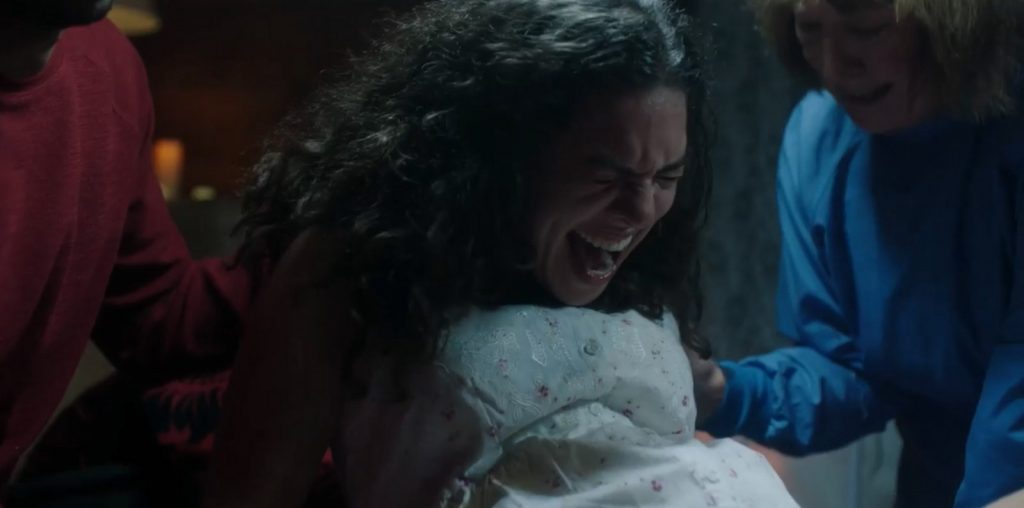
2008 FANTASIA FILM FESTIVAL FEATURE! It is the near future. Global warming has had a very strange effect on the Hochelaga-Maisonneuve district of Montreal: it is suddenly teeming with pricey black truffles (or truffes, in French). The residents of this working class neighborhood take advantage of the situation and for a time are able to bask in the riches this fungal gold-rush have wrought. But like all natural resources, particularly those dug out of the earth, the source starts to dry up.
Alice (Céline Bonnier) and Charles (Roy Dupuis) have been using Charles’ superior olfactory capabilities to supplement the meager income brought in by their diner. Yet, while Charles is able to forage twice what other diggers can, just from the tunnel underneath their diner, it is still far from enough to keep them afloat. So when the mysterious Cols Furs plant suddenly materializes in their neighborhood, offering a starting bonus of exactly what they are short, Charles has no choice but to accept. And while no one questions that Cols Furs is really a front for an organization trying to monopolize the remaining truffles, it is left up to Alice to discover the true nature of the conspiracy.
Allegedly based on a dream director Kim Nguyen once had, Truffe is part surrealist social commentary about consumer culture, part neo-noir with a jazzy score and hard boiled dialogue, and part fairy tale with obvious overtones of “Alice in Wonderland.” It is also a virtual who’s who of some the best actors in Quebec cinema today, with Pierre Lebeau (“Les Boys,” “Bon Cop Bad Cop”), Danielle Prouxl (“C.R.A.Z.Y.”) and Jean-Nicholas Verreault (“Maelström”) all playing supporting characters and popular singer Michèle Richard is cast against type as the head of Cols furs, Mme Kinsdale. And while you can’t deny the pure comedy of having the man who so stoically portrayed national hero Romeo Dalaire in “Shake Hands with the Devil” crawling around on his hands and knees with his nose in the dirt, the film doesn’t quite go far enough for the farce to be truly enjoyable.
The film is full of deadpan and dark humor, but this deadpan focus actually serves to distance the audience from the proceedings. Because the symbolism comes across as personal, attempts to read the film as a parable won’t work. We are instead left to try to piece together the strange bits of the plot for ourselves with no road map or even a general direction. While sometimes frustrating, this leaves the audience with little but the visuals to cling to.
This is where the film really shines. Sumptuously photographed in black and white by Nicolas Bolduc with excellent art direction and framing, the film might have worked even better as a silent film. And while it is well played by everyone involved, the more absurd aspects of the rather light story are never properly grounded in the land of the bizarre. Instead, everything is left to play as merely weird and although this is something of a breath of fresh air for a mainstream film in Quebec, it sadly isn’t enough to make the film memorable beyond that. At times it plays sort of like the bastard love child of “Eraserhead” and “Barton Fink,” but it never goes broad enough to surpass the air of familiarity. This is a real shame, because what does work is a triumph of imagination over budget.
